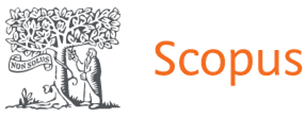The Principle of Historicism and Ways of its Implementation in a Physics Course
DOI:
https://doi.org/10.15330/jpnu.12.1.96-104Keywords:
physics education, didactics, historicism, scientific competencies, student engagement, critical thinking, problem-solvingAbstract
This study investigates the role of the principle of historicism in physics education, emphasizing its impact on students’ scientific competencies. By integrating historical elements into secondary school physics curricula, educators can enhance students' engagement and understanding of scientific concepts. The research highlights that the historical approach not only deepens students’ comprehension of physics as an experimental science but also fosters critical thinking, problem-solving skills, and a broader scientific worldview. An empirical analysis was conducted to assess the current implementation of historicism in physics lessons among teachers in the Carpathian region. The study revealed that while historical elements are not widely used due to time constraints and limited resources, they significantly enhance students’ motivation and interest in physics. A student survey confirmed that historical narratives, particularly those involving major scientific discoveries, contribute to a more engaging learning experience. The research outlines various strategies for incorporating historicism at different stages of physics lessons. These include historical references to introduce and summarize topics, problem-solving activities based on historical events, experiments replicating classical scientific discoveries, and interactive methods such as quizzes, simulations, and discussions. Additionally, the study suggests using multimedia resources, including 3D animations and video demonstrations, to illustrate historical scientific breakthroughs effectively. The findings emphasize that historicism not only reinforces conceptual learning but also aids in the development of analytical skills and scientific literacy. The study recommends that educators systematically integrate historical content into physics teaching through diverse instructional techniques, thereby bridging the gap between theoretical knowledge and its historical development. Ultimately, the incorporation of historicism in physics education fosters a deeper appreciation for scientific progress and enhances students' ability to connect past discoveries with contemporary scientific advancements.











